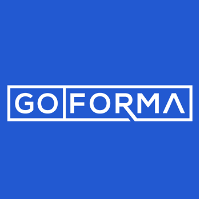Linux based NAS with a Windows domain controller: Permissions
-
Recently Browsing 0 members
- No registered users viewing this page.
-
Posts
-
By D34DL1N3R · Posted
"Hidden" HAAAAHA HAHAAAA!!!! -
By Sem XL · Posted
glad we have more options but im sticking with playnite i know whatever implementation MS does will be half baked -

By Nick H. · Posted
...teasing that it may be becoming a universal launcher like GOG Galaxy or Playnite. Can I respectfully ask that they go and do one? I don't need another launcher. -
By WITHOUT-ME · Posted
same. i bought my sister HP 440 laptop with super bright display for a half price of mac book. installed LTSC and set EU region so no preinstalled shlt apps -
By pradeepviswav · Posted
Lenovo announces the most powerful ARM-based Chromebook with an OLED display by Pradeep Viswanathan Lenovo today announced the Lenovo Chromebook Plus 14, its most powerful ARM-based Chromebook. This Chromebook is powered by the MediaTek Kompanio Ultra 910 processor, which features an NPU that can deliver up to 50 TOPS of AI performance. The Chromebook Plus 14 comes with a 14-inch OLED display, with optional touchscreen models. Customers can customize this laptop with up to 16 GB of RAM based on their performance needs. Thanks to the power-efficient SoC, Lenovo claims that this Chromebook can last up to 17 hours on a single charge, the longest battery life on a Chromebook Plus. The Lenovo Chromebook Plus 14 is now available for purchase in the US, starting at $649 from Best Buy and Lenovo’s official website. To make the purchase more valuable, Google is offering a one-year subscription to its Google AI Pro plan (a $240 value) with every Chromebook Plus. To take advantage of the powerful on-device AI capabilities of the Lenovo Chromebook Plus 14, Google is releasing the following two exclusive AI features: Smart grouping: Users can use AI to organize open Chrome tabs and documents into logical groups. Image editing in the Gallery app: The Gallery app can be used to remove backgrounds, make stickers, and more. Apart from the above exclusive features, Google is also releasing the following updates to all Chromebook Plus models starting today: Select to search & Text capture: A Google Lens-like capability is now available on Chromebooks. Users can just long-press the on-screen launcher button or use the screenshot tool to select anything on their screen for instant Google Search results. Users can also use the new "Text capture" to automatically extract text from images and send it to Google Workspace apps or calendars as editable text. The Quick Insert (QI) key, which was introduced earlier this year, now allows users to easily generate images using AI in addition to its existing capabilities. The new "simplify" feature within "Help me read" will help students convert complex language into more understandable content. Google’s popular NotebookLM research and note-taking app is now pre-installed on every Chromebook Plus. Netflix’s popular Squid Game: Unleashed game is coming to Chromebooks as an optimized desktop app with keyboard and mouse controls and some exclusive in-game items, including skins. With its high‑performance, premium hardware and advanced AI features, the new Lenovo Chromebook Plus 14 is trying to position itself as a strong contender against Windows laptops in the premium segment.
-
-
Recent Achievements
-
fredss earned a badge
Week One Done
-
 fabioc earned a badge
fabioc earned a badge
Dedicated
-
 GoForma earned a badge
GoForma earned a badge
One Month Later
-
 GoForma earned a badge
GoForma earned a badge
Week One Done
-
ravenmanNE earned a badge
Week One Done
-
-
Popular Contributors
-
Tell a friend








Recommended Posts